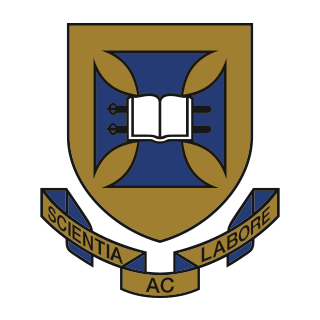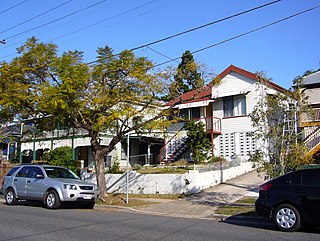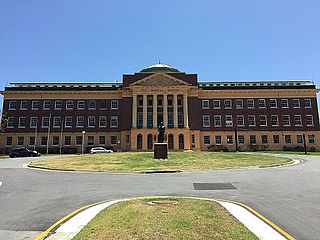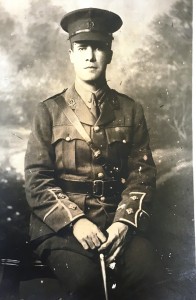
The University of Queensland is a public research university located primarily in Brisbane, the capital city of the Australian state of Queensland. Founded in 1909 by the Queensland parliament, UQ is one of the six sandstone universities, an informal designation of the oldest university in each state. The University of Queensland was ranked second nationally by the Australian Research Council in their latest research assessment and equal second in Australia based on the average of four major global university league tables. The University of Queensland is a founding member of edX, Australia's leading Group of Eight and the international research-intensive Association of Pacific Rim Universities.

Gordon Park is a northern suburb in the City of Brisbane, Queensland, Australia. In the 2016 census, Gordon Park had a population of 4,231 people.

Herston is an inner suburb of the City of Brisbane, Queensland, Australia. In the 2016 census, Herston had a population of 2,215 people.

Bowen Hills is an inner north-eastern suburb in the City of Brisbane, Queensland, Australia. In the 2016 census Bowen Hills had a population of 3,226 people.

South Brisbane is an inner southern suburb in the City of Brisbane, Queensland, Australia. In the 2016 census, South Brisbane had a population of 7,196 people.

Windsor is an inner northern suburb in the City of Brisbane, Queensland, Australia. In the 2016 census, Windsor had a population of 7,013 people.

The Queensland Museum is the state museum of Queensland, dedicated to natural history, cultural heritage, science and human achievement. The museum currently operates from its headquarters and general museum in South Brisbane with specialist museums located in North Ipswich in Ipswich, East Toowoomba in Toowoomba, and in Townsville City in Townsville.

Kelvin Grove is an inner northern suburb in the City of Brisbane, Queensland, Australia. In the 2016 census, Kelvin Grove had a population of 7,927 people.

Woolloongabba is a suburb in the City of Brisbane, Queensland, Australia. In the 2016 census, Woolloongabba had a population of 5,631 people.
The QIMR Berghofer Medical Research Institute is an Australian medical research institute located in Herston, Brisbane, in the state of Queensland. QIMR was established in 1945 by the Government of Queensland through the enactment of the Queensland Institute of Medical Research Act 1945 (Qld). Previously known as the Queensland Institute of Medical Research (QIMR), the original purpose of the institute was to further the study of tropical diseases in North Queensland. The current director is Professor Fabienne Mackay. The institute is a registered charity. In 2021, the institute was named as one of the Queensland Greats by the Queensland Government.

Yeronga is a southern riverside suburb in the City of Brisbane, Queensland, Australia. In the 2016 census, Yeronga had a population of 6,535 people.

Museum of Brisbane (MoB) explores contemporary and historic Brisbane, Australia, and its people through a program of art and social history exhibitions, workshops, talks, tours and children's activities. Located on Level 3, of Brisbane City Hall in the city's CBD, the Museum and its staff are highly regarded for their innovation and contemporary international practice across the museum and gallery sector.

Robert Smith (Robin) Dods was a New Zealand-born Australian architect.

University of Queensland Mayne Medical School is a heritage-listed university building at 288 Herston Road, Herston, City of Brisbane, Queensland, Australia. It was designed by Raymond Clare Nowland and built from 1938 to 1939. It is also known as University of Queensland Medical School. It was added to the Queensland Heritage Register on 24 June 1999.

Gregory Terrace is a road in Brisbane, Queensland, Australia.

Eugen Hirschfeld was a medical practitioner, and member of the Queensland Legislative Council.

Elizabeth Nesta "Pat" Marks was an Australian entomologist who described 38 new mosquito species, as well as new species of fruit flies, bugs, cockroaches and ticks. She had a PhD in insect physiology from the University of Cambridge and was a member of the Royal Entomological Society of London.

Edward Oswald Marks, was an Australian ophthalmologist. He studied first as a geologist, and then began a second career as an ophthalmologist. His work on preventing trachoma in children was significant in reducing eye disease in remote communities.

Alexander Hammett Marks, was an Australian physician and military officer. Serving during the First World War, Marks was mentioned twice in despatches, and awarded the Distinguished Service Order, the Croix de Guerre, and made a Commander of the Order of the British Empire for his service.
Franz Konrad Saddler Hirschfeld CBE (1904-1987) was an Australian medical practitioner and surgeon. He pioneered thoracic surgeries in Australia. He became a university academic, administrator and medical historian.


















